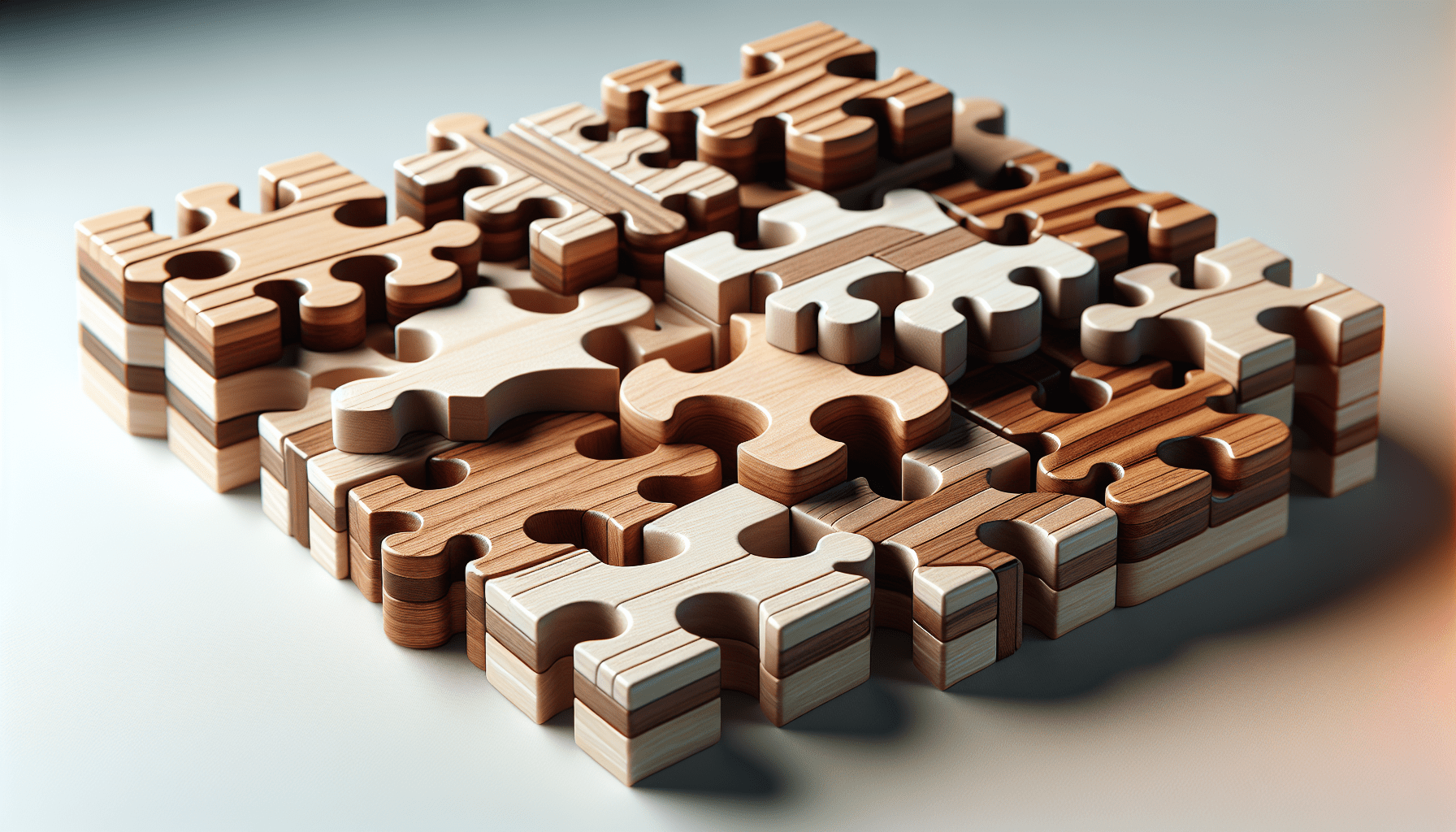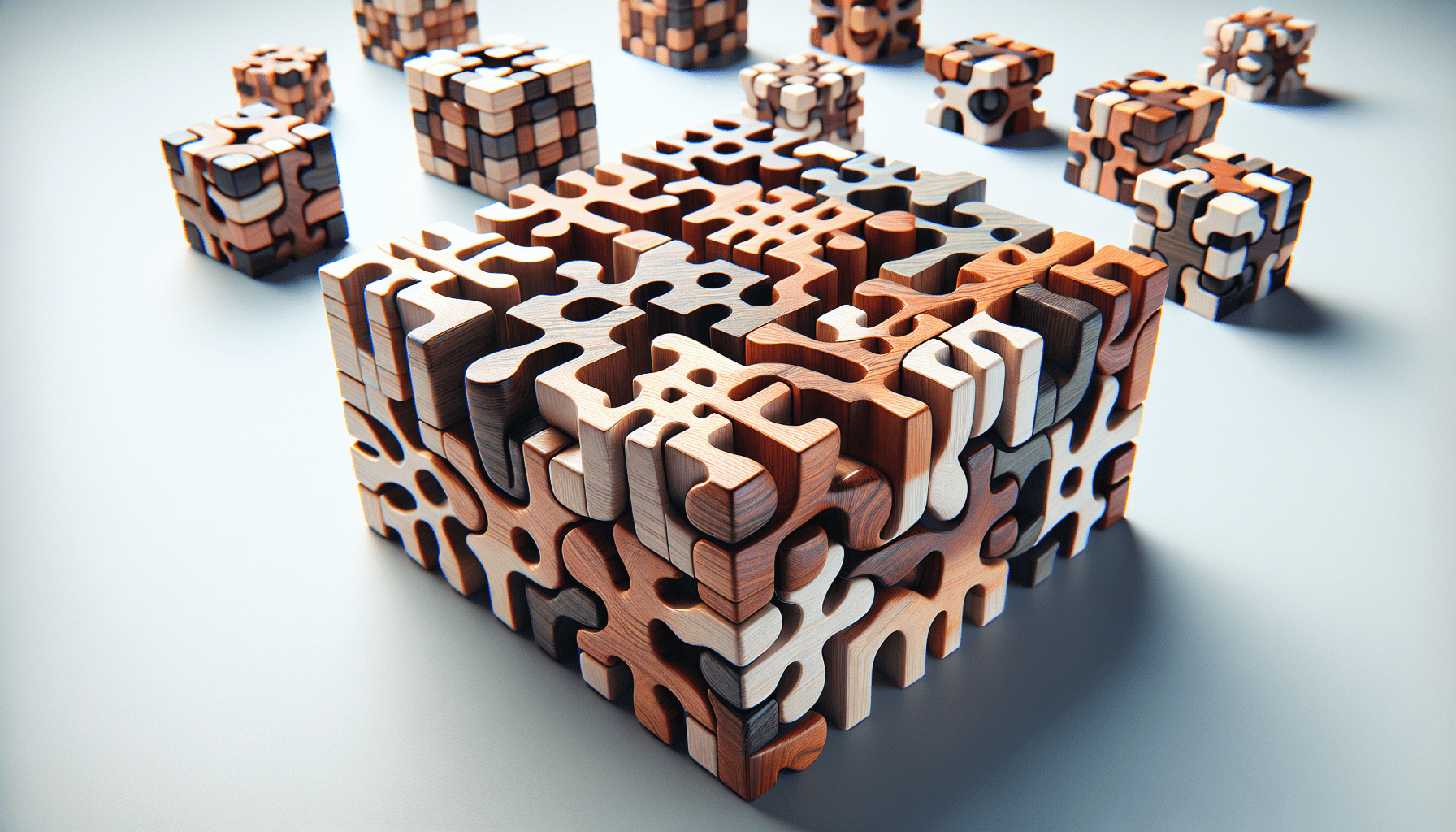Have you ever wondered what materials go into the making of 3D wooden puzzles? These fascinating models offer hours of fun, creativity, and mental exercise. They come from a variety of brands like Robotime, Rokr, Ugears, Wood Trick, EWA, Vitascope, Wooden City, and Handmadecity. While they may seem like simple wooden contraptions at first glance, there’s actually a lot more to these puzzles than meets the eye. Understanding the materials used in these puzzles can give you a deeper appreciation for their craftsmanship and durability.
Wood Types
Before diving into the specific materials, it’s essential to know about the different types of wood used in these puzzles. Wood is the primary component, and its quality largely determines the puzzle’s overall resilience and appearance.
Plywood
Plywood is perhaps the most common material used to make 3D wooden puzzles. It is durable, lightweight, and easy to work with. Plywood is made by layering thin sheets of wood veneers, which are glued together with adjacent layers having their wood grain rotated up to 90 degrees to each other. This cross-graining technique reduces the risk of cracking, splitting, and creates a stable, robust material.
Basswood
Basswood is another commonly used wood. It is highly prized for its fine grain and smoothness, making it especially suitable for laser cutting, which is a predominant method used to create 3D wooden puzzle pieces. It’s soft and easy to carve, making intricate designs viable without compromising on strength.
Birch Wood
Birch wood is known for its strength and fine grain texture, making it a popular choice for 3D wooden puzzles. It offers a smooth finish and is durable enough to withstand the mechanical stresses that puzzle pieces endure. It’s also fairly resistant to warping, ensuring that the puzzle maintains its shape over time.
Adhesives
Without adhesives, the intricate pieces of 3D wooden puzzles wouldn’t hold together. Choosing the right adhesive is crucial for both assembly and longevity.
PVA Glue
Polyvinyl acetate (PVA) glue is commonly used in the assembly of 3D wooden puzzles. It’s a type of white glue known for its robust bonding properties. It dries clear, becoming almost invisible, which is essential for maintaining the aesthetic appeal of the puzzle.
Wood Glue
Another popular choice is wood glue, specifically designed to bond wooden surfaces. It offers a formidable hold and can fill in minor gaps between pieces, enhancing the structural integrity of the puzzle. Some brands use wood glue with added resins for better bonding properties.

Metal Components
Some 3D wooden puzzles incorporate metal parts to enhance functionality and aesthetics. These components may include screws, springs, and axles. Here are a few common metal materials you may find:
Stainless Steel
Stainless steel is often used for screws and axles because it is resistant to rust and offers excellent strength. It ensures that the puzzle can be assembled and disassembled multiple times without compromising its structural integrity.
Brass
Brass is another metal commonly used in 3D wooden puzzles, especially for decorative elements. It has a unique luster and is also corrosion-resistant, making it a durable and visually appealing choice.
Additional Components
Apart from wood and metal, 3D wooden puzzles may also contain a range of other materials to complete their design and functionality.
Rubber Bands
Rubber bands are often used in mechanical puzzles to create tension and enable movement. They are usually used in catapults, gears, and other moving parts. Their elasticity helps in returning parts to their original positions, adding to the puzzle’s mechanical appeal.
Plastic Components
In some 3D wooden puzzles, plastic is used for components that require flexibility or transparency. For instance, some models might use clear plastic to simulate glass windows or flexible plastic for gears and pulleys.
Paints and Finishes
The aesthetics of a 3D wooden puzzle can be significantly enhanced using paints and finishes. High-quality, non-toxic paints are usually applied to add vibrant colors. Finishes like varnish are used to protect the wood from moisture and wear, making it last longer.

Environmental Impact
The materials used in 3D wooden puzzles also have an environmental impact. Sustainable sourcing of wood and the use of eco-friendly adhesives and finishes are becoming more important. Many brands are now focusing on sustainability, ensuring that their products are as eco-friendly as possible.
Sustainable Wood
Brands like Rokr and Ugears often use sustainably sourced wood, certified by organizations like the Forest Stewardship Council (FSC). This ensures that the wood comes from responsibly managed forests that provide environmental, social, and economic benefits.
Non-Toxic Adhesives and Finishes
Non-toxic adhesives and finishes are also gaining popularity. These materials are safer for the environment and for the people assembling the puzzles. Brands are increasingly using water-based paints and sealants that do not emit harmful VOCs (volatile organic compounds).
Quality Control
The manufacturing process of 3D wooden puzzles involves stringent quality control measures to ensure that each piece fits perfectly and the puzzle as a whole functions as intended. Here are some of the quality control measures often employed:
Precision Cutting
Laser cutting is the most commonly used technique for 3D wooden puzzles. It ensures that each piece is cut with high precision, providing a perfect fit. Laser cutting also reduces waste, making it a more sustainable option.
Clean Edges
The edges of each puzzle piece must be smooth to avoid splinters and to make the assembly process pleasant. Quality control often involves manual inspection to ensure that all edges are clean and safe.
Fit and Functionality Tests
Before packaging, each puzzle is usually assembled as a part of the quality assurance process. This ensures that all pieces fit together as intended and that any moving parts function correctly.
Brands and Their Unique Materials
Different brands have unique approaches to the materials they use in their 3D wooden puzzles. Knowing these differences can help you choose the right puzzle that suits your preferences.
Robotime
Robotime puzzles are known for their detailed designs and quality materials. They predominantly use Plywood and Basswood, combined with sturdy adhesives.
Rokr
Rokr is another brand that emphasizes the mechanical aspects of 3D wooden puzzles. They frequently use metal components like stainless steel and brass to ensure durability and functionality.
Ugears
Ugears focuses on engineering marvels. They incorporate a variety of materials, including birch wood, stainless steel, and high-quality rubber bands, to create intricate mechanical movements.
Wood Trick
Wood Trick puzzles are noted for their robustness and intricate designs. They often use high-quality Plywood and sustainable adhesives.
EWA Eco-Wood-Art
EWA Eco-Wood-Art stands out for its commitment to sustainability. They use FSC-certified wood and non-toxic finishes to create their eco-friendly puzzles.
Vitascope
Vitascope is known for adding a touch of modernity to traditional wooden puzzles. They often incorporate plastic components for added flexibility and aesthetic appeal.
Wooden City
Wooden City focuses on creating models that embody both functionality and aesthetics. They use a mix of Basswood and birch, along with eco-friendly adhesives.
Handmadecity
Handmadecity offers artisanal puzzles with a focus on hand-crafted quality. They use a variety of wood types, including exotic woods, and non-toxic finishes, ensuring each piece is a unique work of art.
Benefits of High-Quality Materials
Choosing 3D wooden puzzles made with high-quality materials offers several benefits that go beyond mere aesthetics:
Durability
High-quality materials ensure that the puzzle can withstand frequent assembly and disassembly without wearing out or breaking. This durability makes the puzzle a lasting investment.
Precision
Using top-notch materials allows for precision in cutting and fitting each piece. This ensures a seamless assembly process, making the puzzle more enjoyable to put together.
Safety
Materials like non-toxic adhesives and paints make these puzzles safer for all ages, reducing the risk of harmful chemical exposure.
Environmental Responsibility
Opting for puzzles made from sustainably sourced wood and eco-friendly materials helps reduce your carbon footprint, making your hobby more environmentally responsible.
Collectability
High-quality materials increase the collectability of these puzzles. Their durability, combined with aesthetic appeal, makes them cherished collectibles that can be passed down through generations.
Conclusion
3D wooden puzzles offer a unique blend of challenge, creativity, and satisfaction. The materials used to create these puzzles are crucial for their durability, functionality, and overall appeal. From the different types of wood, such as Plywood, Basswood, and Birch, to the adhesives, metal components, and additional materials like rubber bands and plastic, each element plays a vital role in bringing these intricate puzzles to life.
Understanding what goes into making these puzzles can enhance your appreciation for the craftsmanship involved. Whether you’re a casual hobbyist or a dedicated puzzle enthusiast, knowing the materials can help you make an informed choice, ensuring that you select high-quality, sustainable options that offer the best experience and longevity.
Ready to start your 3D wooden puzzle journey? Click on any of the following links for our reviews:
All Categories
Boats
Clocks
Marble Runs
Musical Boxes
Musical Instruments
Puzzle Boxes
Trains
Trams
Trucks